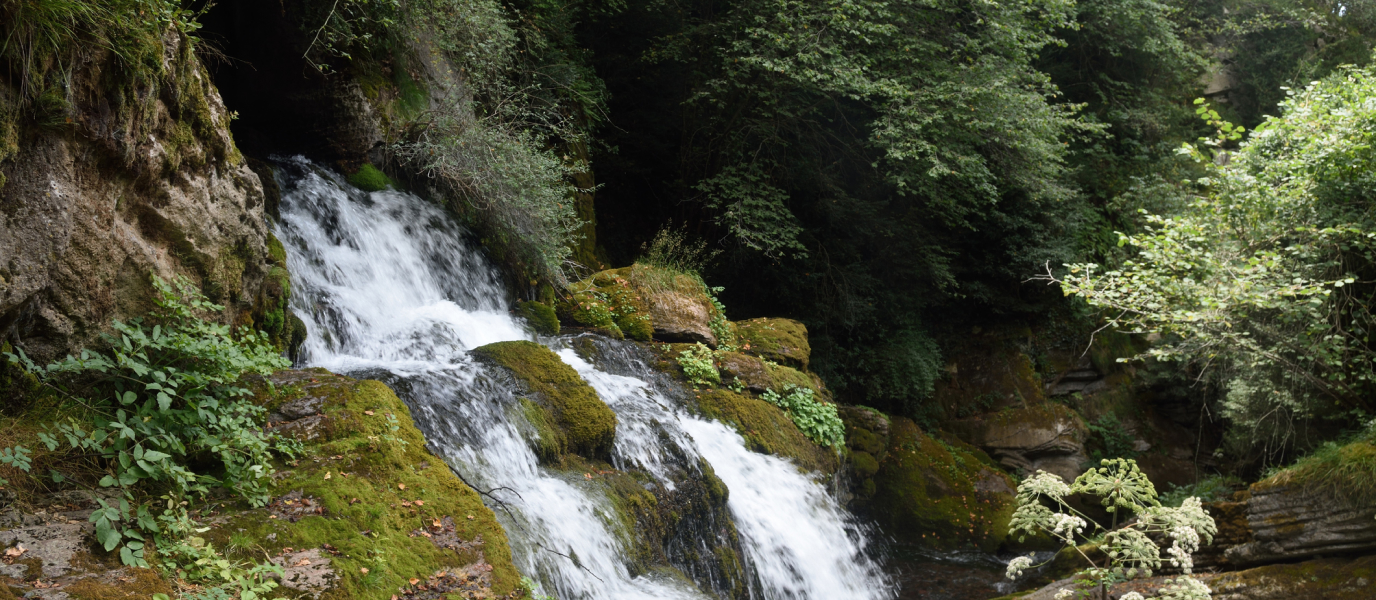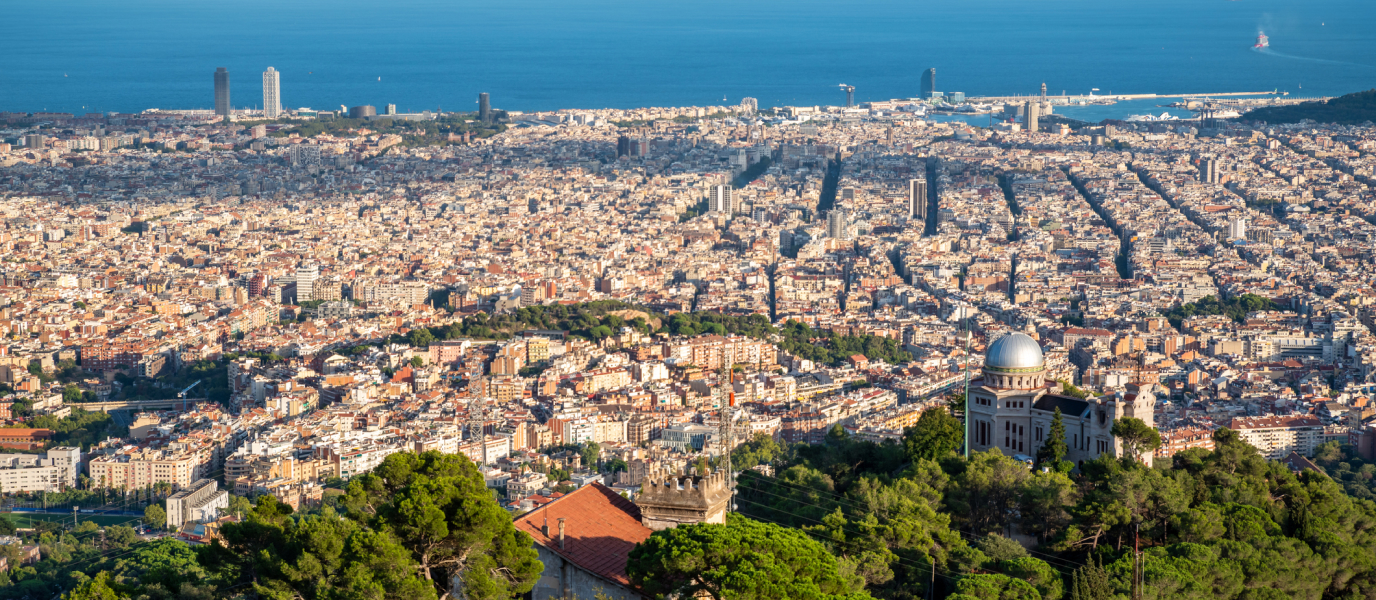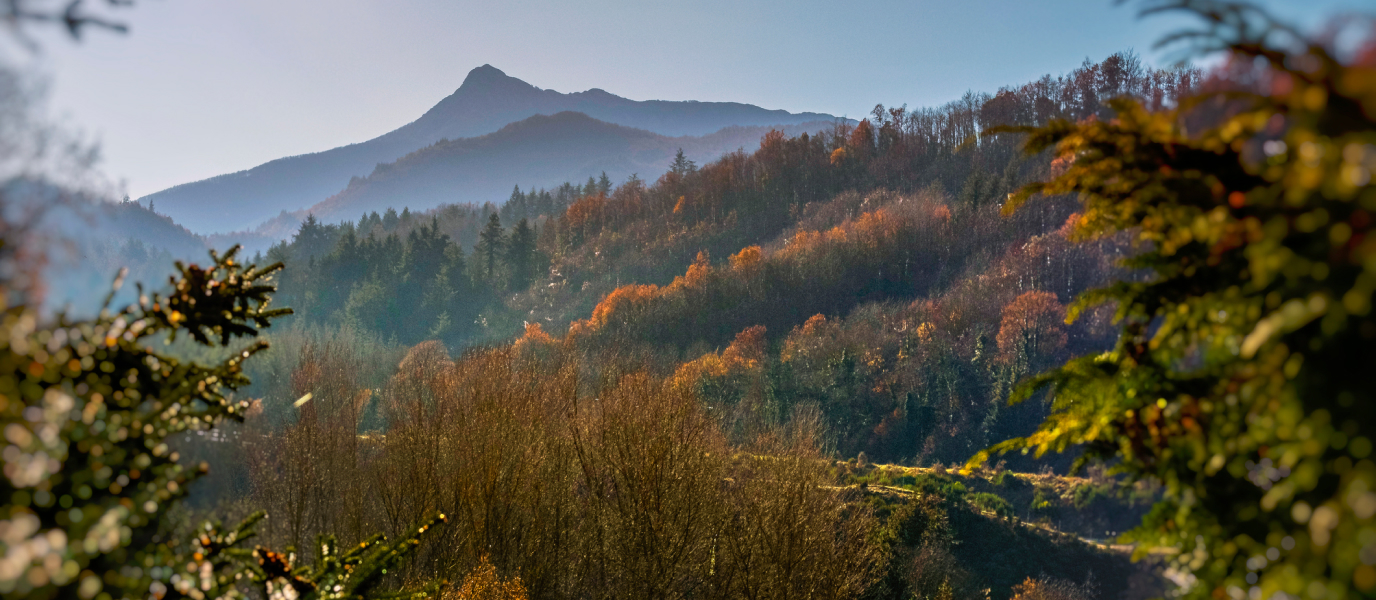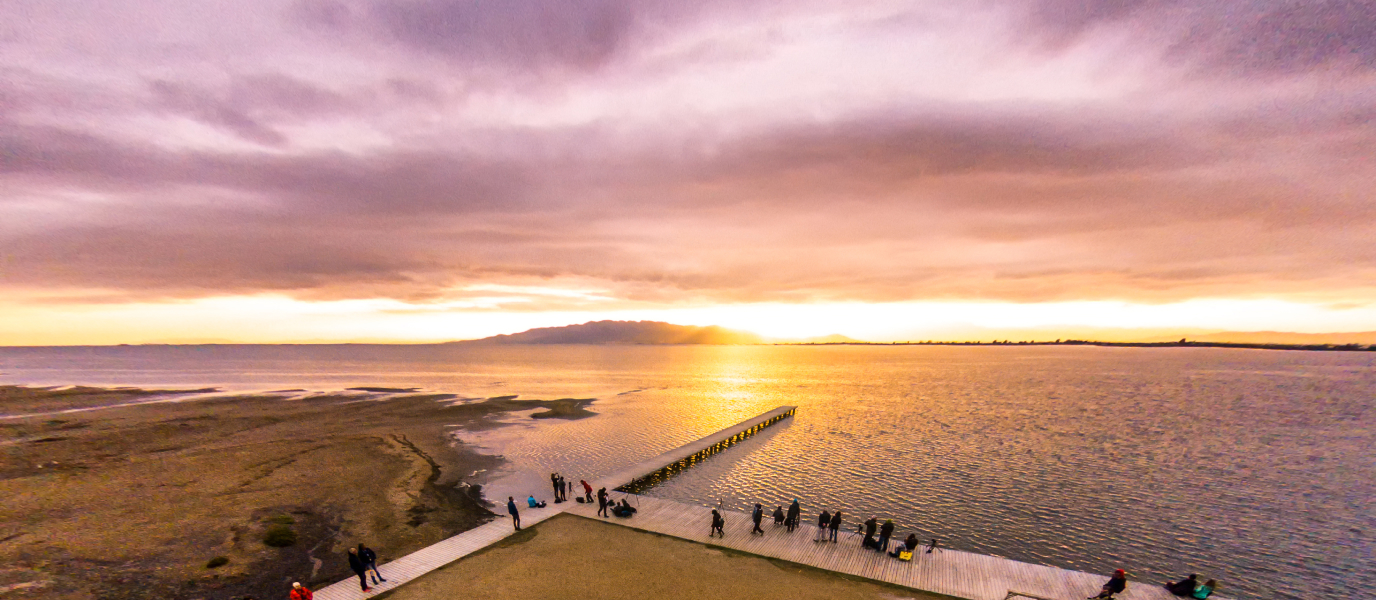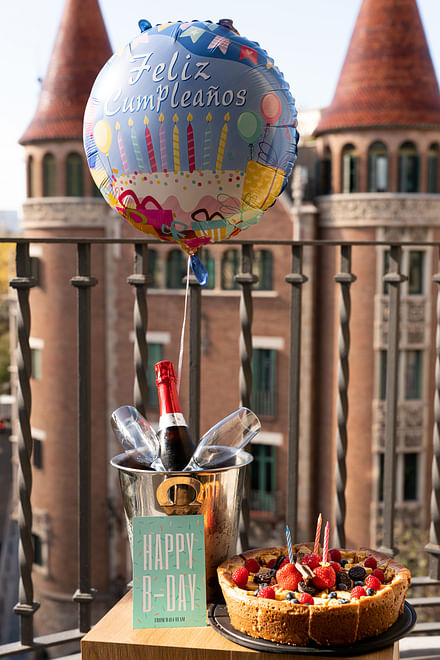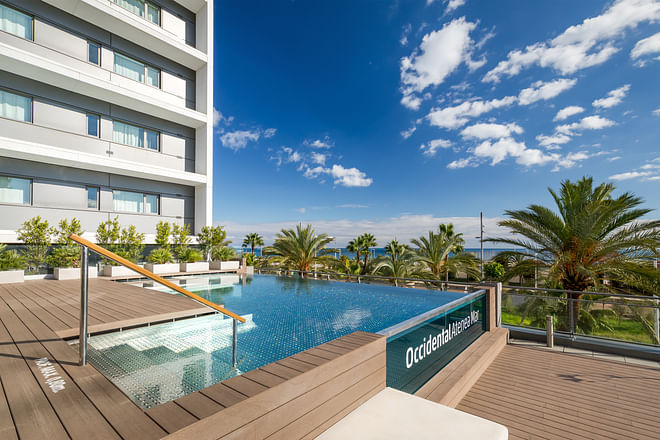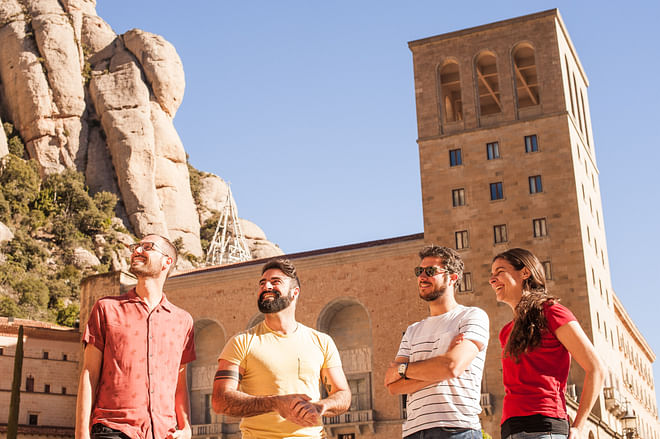Les Fonts del Llobregat are a stunning natural feature in the heart of the Catalan Pyrenees at a midway point between the provinces of Lleida, Girona and Barcelona. This natural setting reaches its moment of greatest splendour in spring when the winter’s frost finally thaws. This is when you’ll find the largest number of tourists in the area. People come here to admire the natural waterfalls formed by the Llobregat river at its source.
A trip to Les Fonts del Llobregat wouldn’t be complete without enjoying the stone pavements in the centre of Castellar de n’Hug, a town close to the waterfalls. And, while you’re here, you could round off your day of adventure with a hiking or bicycle route through one of the most spectacular places in the Pyrenees: the Serra del Cadí mountains.
The source of the Llobregat river
The Llobregat river starts at an altitude of 1,300 metres and travels some distance underground before it appears at the surface, swelling with rainwater and thawed ice from the nearby Puigllançada and Tossa d’Alp peaks.
The river emerges in a series of waterfalls that are fast-flowing during spring and years that see heavy rainfall: these waterfalls are known as Les Fonts del Llobregat. To ensure this attraction can be admired while preserving the natural setting at the same time, a wooden viewpoint has been created opposite the waterfalls and it’s a fantastic spot to take some really impressive photos.
The viewpoint can be reached by car but it’s far more fun to follow the path that leads here from Castellar de n’Hug. It’s an easy 20-minute route that follows the course of the river until you reach Les Fonts del Llobregat, enjoying the unspoilt nature around you along the way. The route is barely 1 km long and is perfect for families with children.
More information about the Llobregat river
This is the source of the Llobregat river, which flows down to reach the sea to the south of Barcelona and passes dozens of towns along the way. Many fall within the metropolitan area of Barcelona, a zone where man has altered the course of the river in many different ways and places.
The Llobregat river is 175 km long and flows into the Mediterranean Sea, creating a hugely important wetland. In fact, the final stretch of the river is a Nature Reserve.
The Llobregat was essential to the industrialization and economic growth of Catalonia. A large number of industries were established along its course since the mid-nineteenth century. These were predominantly related to textiles but there were also hydroelectric power plants that took advantage of the 36 dams and reservoirs that were built along its course.
A large number of Llobregat’s hydroelectric resources are centred in the Serra del Cadí mountains very close to the source of the river.
The Serra del Cadí
The Serra del Cadí is the area where you’ll find Les Fonts del Llobregat. One of the most notable peculiarities of this place is that it’s situated at the point where the provinces of Barcelona, Lleida and Girona meet. It’s also the point where three of the most distinctive regions in the Pre-Pyrenees converge: Berguedá, Alt Urgell and Cerdanya.
This setting has a wealth of nature and enjoys special protection under the umbrella of the Serra del Cadí-Moixeró Natural Park, which covers 41,000 hectares, including 18 municipalities.
The Serra del Cadí has one of the widest ranges of rural tourism options in Catalonia with numerous hiking and outdoor activities; it’s practically the “hiking capital” of the region.
Pedraforca is especially important and is one of the most emblematic mountains in Catalonia for hikers and mountain climbers. Its peak soars up to an altitude of 2,500 metres and it has plenty different routes of varying length and difficulty.
A wealth of nature in the Serra del Cadí
Once you’re at Les Fonts del Llobregat it’s easy to appreciate that the true kings of the Serra del Cadí mountains are its pine trees. Vast Scots and mountain pine forests cover the mountains from the source of the river until an altitude of roughly 1,500 m.
The other most common plant species are beech, holly, downy oak, holm oak and Spanish juniper. Higher areas are populated by plants such rhododendron, gentian and mountain crocus.
There are also 13 species catalogued as being under threat or in danger of extinction. These includes Woodsia pulchella, a small fern that only grows on Pedraforca, and orchis spitzelli, a type of orchid that grows in two areas of the Serra del Cadí.
In terms of fauna, 60 mammal species have been recorded as living in the park and its environment. Species include bats, wolves and wild boar, which are rarely sighted. It’s easier to spot chamois, deer, roe deer, hares, martens, badgers and genets.
In terms of birds, there are around 130 species in the Serra del Cadí. Some of the most important are the subalpine warbler, black woodpecker, capercaillie, boreal owl, coat tit, red crossbill, ring ouzel and citril finch.
Many fascinating birds of prey also inhabit the mountains, including vultures, the bearded vulture (a species native to the Pyrenees), the golden eagle and common kestrel. There are even rare sightings of wallcreepers and the Serra del Cadí is one of the best places to find traces of this elusive bird.

























































